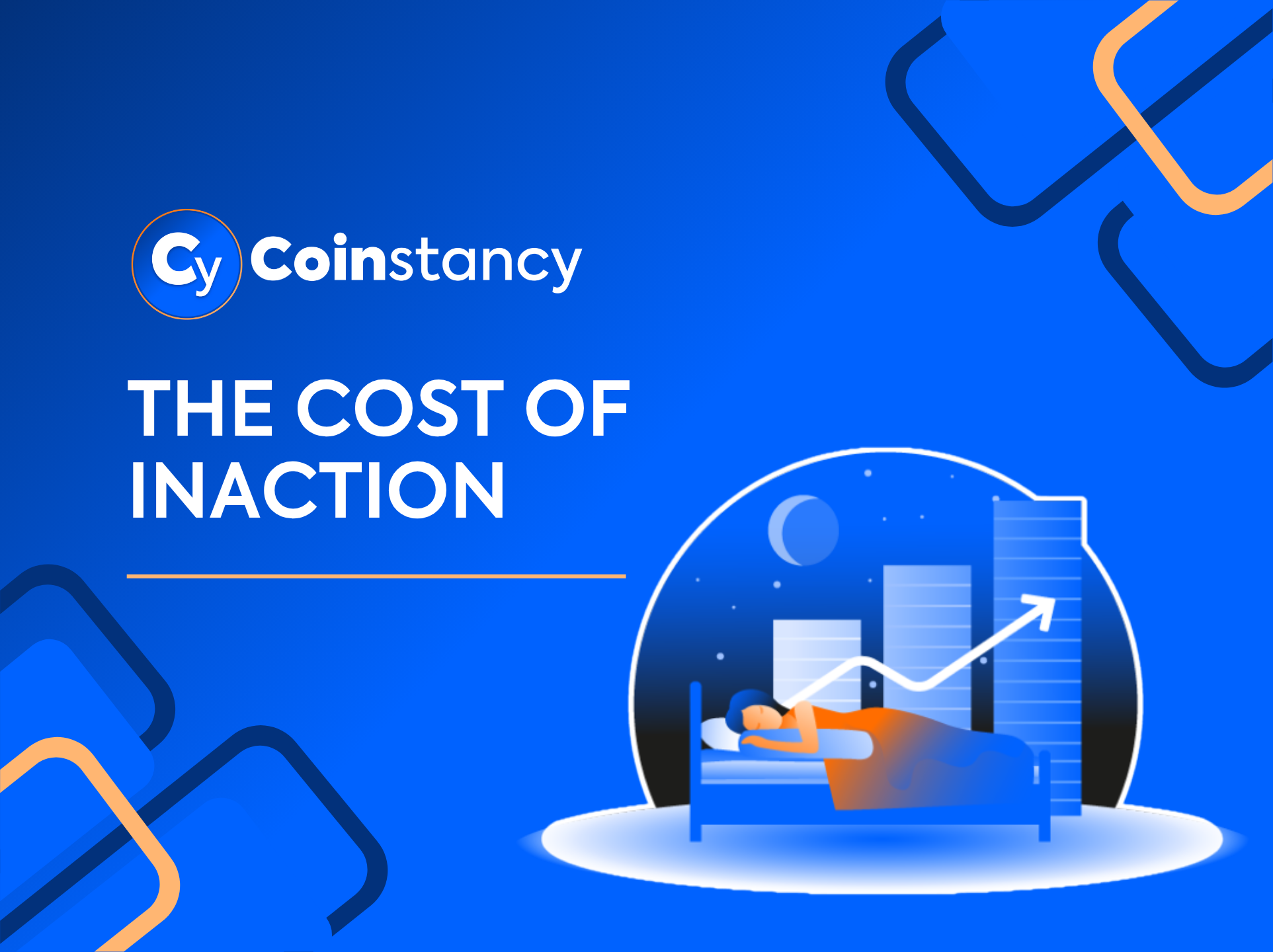
What you lose by not investing
Every financial decision carries a hidden price: the opportunity cost, which is the value of the best forgone alternative. Letting €10,000 sit at 0.5% instead of earning 9% in stablecoin yields means losing €850 annually. Understanding this concept helps you avoid missing significant long-term gains 💡
Get the best returns on Coinstancy.
Sign up for free in just a few clicks.
What is opportunity cost?
Opportunity cost is the difference in returns between the chosen option and the best unchosen option. For example, €10,000 at 0.5% yields €50 vs. €900 at 9%, making the annual opportunity cost €850. This simple calculation shows why every percentage point matters for growing your wealth.
Why it matters
- Maximize returns: knowing what you miss out on motivates you to explore better choices.
- Improve decisions: opportunity cost forces deliberate financial thinking.
- Avoid regret: anticipating missed gains reduces future frustration.
It’s a mental tool for becoming a savvy investor.
Opportunity cost and inflation
Inflation erodes purchasing power. If your savings yield below inflation, your money loses value. For example:
- 3% inflation
- 0.5% savings rate
Result: a 2.5% annual loss in purchasing power, even before fees. Thus, idle funds can be costlier than riskier but higher-yielding investments 😉
Real-life examples
1. Bank savings vs. stablecoins
- Standard savings (0.5%)
- USDC on Coinstancy (9%)
For €20,000:
- Savings: €100
- USDC yield: €1,800
Opportunity cost: €1,700/year.
2. Real estate vs. crypto staking
- Average rental yield: 3%
- Staking yield: 9%
On €50,000:
- Rental: €1,500
- Staking: €4,500
Opportunity cost: €3,000/year.
Limitations to consider
- Risk vs. reward: higher yields often mean higher volatility.
- Liquidity: some assets (real estate, bonds) less easily converted to cash.
- Investment horizon: long-term commitments tie up capital for years.
The goal isn’t to chase the highest yield but to understand what you forgo by staying passive.
How to reduce your opportunity cost
- Diversify: spread savings across assets (stablecoins, stocks, real estate).
- Automate: use DCA (Dollar-Cost Averaging) to smooth market swings.
- Educate: follow guides, webinars, analyses.
- Review regularly: quarterly check-ins to adjust allocations based on performance 🔄
These habits help you seize opportunities without stress.
Measure and adjust
Rigorous tracking is crucial:
- Dashboard: consolidate all investments for easy comparison
- Alerts: notify when options exceed thresholds
- Investment journal: record motivations and outcomes for learning
Structured monitoring minimizes opportunity cost and optimizes your portfolio 📈
Get the best returns on Coinstancy.
Sign up for free in just a few clicks.
Conclusion: the cost of inaction
Inaction has a price: every euro idle loses value against better alternatives. Opportunity cost reminds you that nothing is free in finance. By educating yourself, diversifying, and automating investing, you cut this cost and make your money work for you. Stop letting potential gains slip away! 💪🚀